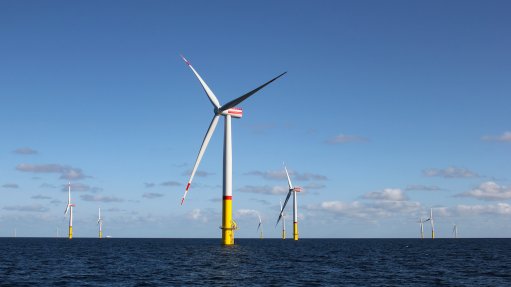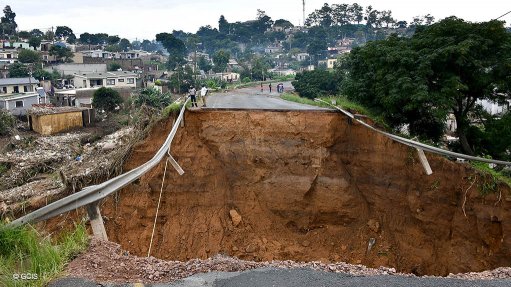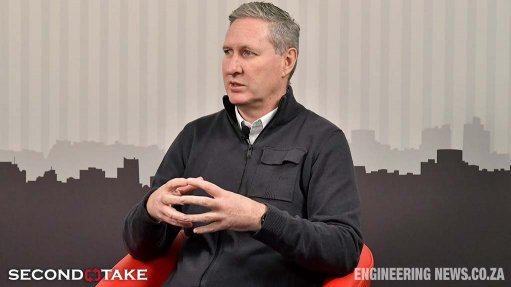DWS promises minimal disruption as six-month maintenance closure of Lesotho Highlands tunnel nears
As the imminent six-month closure for scheduled maintenance of the Lesotho Highlands tunnel draws closer, the Department of Water and Sanitation (DWS) assures that it is ready and that all necessary measures have been taken to limit disruption to Gauteng’s water supply.
The shutdown from October 1, 2024, to March 31, 2025, will result in an 80-million- cubic-metre shortfall during 2024 in the water supply from the critical Lesotho Highlands Water Project (LHWP) to the Integrated Vaal River System (IVRS).
Phase 1 of the LHWP, which was completed in 2003 and comprises 82 km of tunnels, the Katse and Mohale dams and the Muela power station, currently transfers 780-million cubic metres of water each year into the IVRS.
The maintenance is crucial to preserve the integrity of the delivery tunnels as a tunnel failure will jeopardise the transfer to the IVRS, from which Rand Water draws water to supply its customers, DWS director-general Dr Sean Phillips previously commented.
The tunnel system, which includes a transfer tunnel linking Katse dam with Muela power station and Muela dam, as well as a delivery tunnel linking Muela dam with the Ash River Outfall Works between Clarens and Bethlehem, requires inspections and maintenance at intervals of between five and ten years respectively.
During the last maintenance and shutdown undertaken in 2019, it was found that the steel liners in the tunnel urgently needed extensive maintenance on both the South African and Lesotho sides, which will take six months to complete.
The work required includes grit-blasting the steel-lined section around the entire circumference and re-applying corrosion protection on the tunnel lining, as well as other maintenance and repair work identified during the 2019 maintenance shutdown.
This work, which is expected to protect the infrastructure for another 20 to 30 years, is being overseen by the Lesotho Highlands Water Commission and will be jointly undertaken by the Lesotho Highlands Development Agency and the Trans-Caledon Tunnel Authority (TCTA).
The department and relevant stakeholders in the water sector have taken all necessary measures to ensure that the water supply in Gauteng will not be affected during the shutdown, says DWS Gauteng provincial head Justice Maluleke.
“The main message is that we are ready for the tunnel closure and the public must not panic; we have all the plans in place, and we will be communicating,” he told delegates at a City Meets Business engagement session in June.
The department is collaborating with all stakeholders from Lesotho, the TCTA, Rand Water, the cities of Tshwane, Ekurhuleni and Johannesburg, and other entities. While there may be potential challenges, Maluleke is confidence in the preparedness to handle any obstacles that may arise.
“In a worst-case scenario of shortage of water supply, the IVRS has 13 dams that supply water to the system. This is only at the worst-case scenario when the Vaal dam is around 18%, but since the closure will be during the rainy season, we do not anticipate that that is going to happen,” he explains.
DWS system operation scientist manager Celiwe Ntuli supports Maluleke’s assertion, stating that the analysis shows no risk of water shortage in the IVRS.
An analysis conducted in May 2023 in preparation for the maintenance to assess the closure’s risks and impacts indicated that the impact of the outage on the overall IVRS would be insignificant, considering that dams in the IVRS, such as the Sterkfontein dam and others, were relatively full, which meant that they could provide a reserve supply of water to top up the Vaal dam as needed.
Water from the Sterkfontein dam is released into the Vaal dam when the Vaal dam reaches a minimum operating level of 18%, which the DWS says was unlikely to occur at any probability level in the 2023/24 operating year.
“This means that the closure of the tunnel for maintenance will not result in any disruption of water supply to Rand Water, and to the municipalities in Gauteng and other provinces which are customers of Rand Water,” Phillips assures.
According to the DWS, the tunnel’s closure will also not have any significant water supply implications for domestic users along the Liebenbergsvlei river and its tributaries in the Free State. The Liebenbergsvlei river normally receives outflows from the tunnel.
However, while the tunnel is shut down, additional water will be supplied from the Saulspoort dam, which will be filled with water before the start of the shutdown to ensure that the water requirements of towns along the river, including Bethlehem, Reitz and Tweeling, have sufficient water.
Licensed irrigators along the Liebenbergsvlei river and its tributaries will receive notices to restrict their abstraction during the shutdown period to specific days of the week, so that they abstract water from rivers fed by the Saulspoort dam in a sustainable way during the tunnel closure.
Abstraction of water from the river will be closely monitored by the department during the closure to ensure that there is no illegal abstraction which might affect the ability of licensed irrigators to abstract the water which they require.
While the DWS says that plans are in place to mitigate the closure of the transfer tunnel, it urges all water users affected by the planned tunnel maintenance to use water sparingly during this period, as a means of managing any unforeseen risks.
After the shutdown period, the water transfers will be increased to enable the shortfall in transfers to be recovered.
The planned closure of the tunnel for maintenance will also not impact the ongoing construction of Phase II of the LHWP.
Phase II of the project, which is currently under construction, includes a 165-m-high concrete-faced rockfill dam at Polihali and a 38-km-long concrete-lined gravity tunnel connecting the Polihali dam reservoir to the Katse dam.
Comments
Announcements
What's On
Subscribe to improve your user experience...
Option 1 (equivalent of R125 a month):
Receive a weekly copy of Creamer Media's Engineering News & Mining Weekly magazine
(print copy for those in South Africa and e-magazine for those outside of South Africa)
Receive daily email newsletters
Access to full search results
Access archive of magazine back copies
Access to Projects in Progress
Access to ONE Research Report of your choice in PDF format
Option 2 (equivalent of R375 a month):
All benefits from Option 1
PLUS
Access to Creamer Media's Research Channel Africa for ALL Research Reports, in PDF format, on various industrial and mining sectors
including Electricity; Water; Energy Transition; Hydrogen; Roads, Rail and Ports; Coal; Gold; Platinum; Battery Metals; etc.
Already a subscriber?
Forgotten your password?
Receive weekly copy of Creamer Media's Engineering News & Mining Weekly magazine (print copy for those in South Africa and e-magazine for those outside of South Africa)
➕
Recieve daily email newsletters
➕
Access to full search results
➕
Access archive of magazine back copies
➕
Access to Projects in Progress
➕
Access to ONE Research Report of your choice in PDF format
RESEARCH CHANNEL AFRICA
R4500 (equivalent of R375 a month)
SUBSCRIBEAll benefits from Option 1
➕
Access to Creamer Media's Research Channel Africa for ALL Research Reports on various industrial and mining sectors, in PDF format, including on:
Electricity
➕
Water
➕
Energy Transition
➕
Hydrogen
➕
Roads, Rail and Ports
➕
Coal
➕
Gold
➕
Platinum
➕
Battery Metals
➕
etc.
Receive all benefits from Option 1 or Option 2 delivered to numerous people at your company
➕
Multiple User names and Passwords for simultaneous log-ins
➕
Intranet integration access to all in your organisation


















